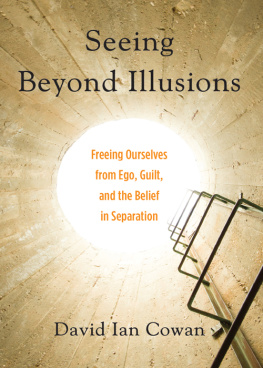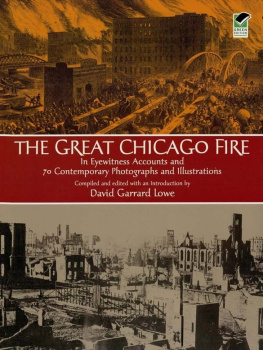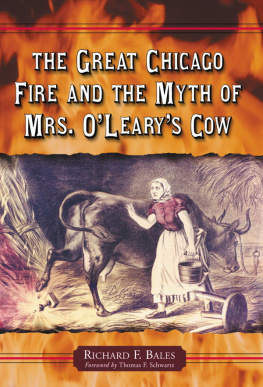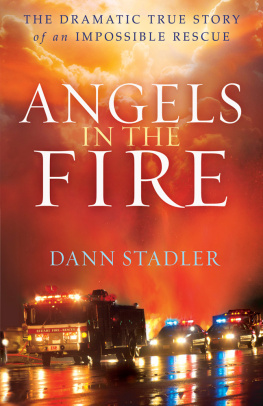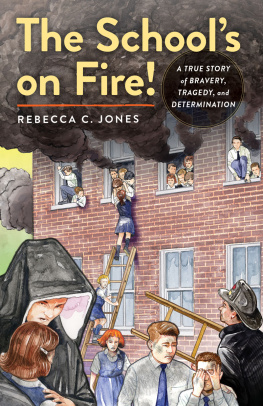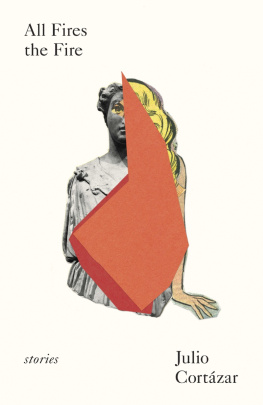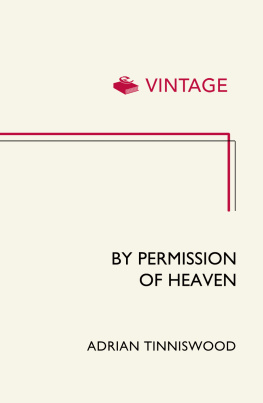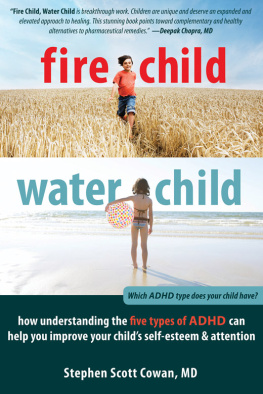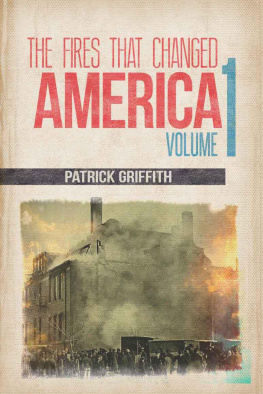David Cowan - To Sleep with the Angels: The Story of a Fire
Here you can read online David Cowan - To Sleep with the Angels: The Story of a Fire full text of the book (entire story) in english for free. Download pdf and epub, get meaning, cover and reviews about this ebook. year: 1996, publisher: Ivan R. Dee, genre: Detective and thriller. Description of the work, (preface) as well as reviews are available. Best literature library LitArk.com created for fans of good reading and offers a wide selection of genres:
Romance novel
Science fiction
Adventure
Detective
Science
History
Home and family
Prose
Art
Politics
Computer
Non-fiction
Religion
Business
Children
Humor
Choose a favorite category and find really read worthwhile books. Enjoy immersion in the world of imagination, feel the emotions of the characters or learn something new for yourself, make an fascinating discovery.

- Book:To Sleep with the Angels: The Story of a Fire
- Author:
- Publisher:Ivan R. Dee
- Genre:
- Year:1996
- Rating:3 / 5
- Favourites:Add to favourites
- Your mark:
- 60
- 1
- 2
- 3
- 4
- 5
To Sleep with the Angels: The Story of a Fire: summary, description and annotation
We offer to read an annotation, description, summary or preface (depends on what the author of the book "To Sleep with the Angels: The Story of a Fire" wrote himself). If you haven't found the necessary information about the book — write in the comments, we will try to find it.
David Cowan: author's other books
Who wrote To Sleep with the Angels: The Story of a Fire? Find out the surname, the name of the author of the book and a list of all author's works by series.
To Sleep with the Angels: The Story of a Fire — read online for free the complete book (whole text) full work
Below is the text of the book, divided by pages. System saving the place of the last page read, allows you to conveniently read the book "To Sleep with the Angels: The Story of a Fire" online for free, without having to search again every time where you left off. Put a bookmark, and you can go to the page where you finished reading at any time.
Font size:
Interval:
Bookmark:

TO SLEEP WITH THE ANGELS. Copyright 1996 by David Cowan and John Kuenster. All rights reserved, including the right to reproduce this book or portions thereof in any form. For information, address: Ivan R. Dee, Inc., 1332 North Halsted Street, Chicago 60622. First Elephant Paperback edition published 1998. Manufactured in the United States of America and printed on acid-free paper.
Photo credits (page numbers refer to pages of the photo section following page 144): page 1top, Chicago Tribune; page 1bottom, page 2top, page 3bottom, page 5top, Stephen Lasker; page 8top, Bill Rowe; page 8bottom, New World.
Maps by Victor Thompson
Library of Congress Cataloging-in-Publication Data:
Cowan, David, 1963
To sleep with the angels : the story of a fire / David Cowan and
John Kuenster.
p. cm.
Includes index.
ISBN 1-56663-217-x
1. Our Lady of the Angels School (Chicago, Ill.)Fire, 1958.
2. Elementary schoolsFires and fire preventionIllinoisChicagoHistory20th century. I. Kuenster, John. II. Title.
LD7501.C434C68 1996
| 372.977311dc20 | 95-46795 |
A hard-cover edition of this book is also available:
ISBN 1-56663-102-5.
So that they not be forgotten, this book is
dedicated to the memory of the ninety-two
children and three nuns who perished in the
fire at Our Lady of the Angels School on
December 1, 1958;
to the families of the fire victims and to the
survivors of the fire, all of whom have quietly
passed through life bearing grief and
memories;
and to those members of the Chicago Fire
Department who battled the blaze and who, in
the face of great personal danger, performed
unselfishly in the highest traditions of the
American fire service.
THIS BOOK IS about the fire at Our Lady of the Angels School in Chicago, one of the most tragic in the nations history, and about how it affected the people and the community it touched. What happened on December I, 1958, and after is much more than a story of sorrow and death. It is also a story of hope and survival. Through taped interviews with former students who survived the fire, parents of those who died, teachers, firefighters, clergy, police, investigators, hospital personnel, news reporters, and othersmany of them talking publicly for the first timewe have tried to construct a narrative of courage, perseverance, compassion, and professional dedication. The stories of these lives testify to the resiliency and essential goodness of the human spirit, and deserve to be remembered.
Our Lady of the Angels was not the worst school disaster in American history. That dubious distinction belongs to Consolidated School in rural New London, Texas, where on March 18, 1937, a natural gas explosion demolished the building and killed 427 pupils and teachers. The nations second worst school tragedy occurred March 4, 1908, when fire swept the Lakeview Elementary School in Collinwood, Ohio, killing 178. Although the death toll at Our Lady of the Angels was not as great, it remains more than a defining episode in the colorful and tragic history of a great city, for it led to a complete overhaul of school fire safety laws in the United States, thereby changing the manner in which schoolchildren are housed.
The fire at Our Lady of the Angels School brought crushing grief to those who lost loved ones, inflicted terrible physical and emotional suffering on survivors and their families, sickened firefighters, police officers, and news reporters who responded to the scene, and literally destroyed the schools neighborhood. It brought angry denunciations of the archdiocese of Chicago, school personnel, and the city of Chicago.
We have often been asked why we decided to write this book. The question has never been an easy one to answer. For both of us, what began as genuine curiosity soon turned into outright obsession. The deeper we dug, the more attached we became to the subject. In many respects the Our Lady of the Angels fire remains as much a mystery as it did the day news of the disaster appeared on the front page of virtually every newspaper in the country. After several years of working independently, in 1990 we decided to combine our efforts and work together as partners. By doing so we hoped finally to set straight the record on the fire, perhaps to give voice to those who still grieve, and to provide a sense of closure to an historical void that has remained open for nearly four decades.
Outside of government and the official church, many people helped make this book a reality. It is their story, not ours; we simply put it together for them. We relied on numerous sources in the Chicago Police and Fire Departments, the Cicero, Illinois, Police and Fire Departments, the Cook County States Attorneys office, the Cook County Medical Examiners office, and the Illinois State Fire Marshals office who provided us with documents, reports, photographs, and other materials. The Catholic Archdiocese of Chicago allowed us access to its archives, but the information it had collected on the fire was skimpy. There was not even a specific file on the fire, and missing were any personal papers from former Archbishop Albert Meyer pertaining to the fire. Other, more abundant sources of relevant information include the National Fire Protection Association, the International Association of Firefighters, Chicago Fire Department annual reports, and news reports published in the Chicago Daily News, Chicago American, Chicago Tribune, and Chicago Sun-Times.
At the time of the fire more than sixteen hundred pupils were enrolled in the school. Many of them had riveting stories to tell. The time, energy, and logistics involved in researching and writing a history of this fire were enormous. We sought out as many survivors as possible. Most were willing to talk with us about their experience, as unpleasant as this may have been for them, and we are deeply grateful for their candor. In most cases there was one constant: people remembered the fire as if it occurred yesterday, and they carried many unresolved feelings about it.
In the final manuscript we chose to include those recollections we thought best represented all who were involved. We made no attempt to create a pecking order of those who endured the worst trauma or whose lives were most deeply affected by the fire. Because there are too many people to mention, and because we fear we might inadvertently omit a name or two, we simply wish to extend a heartfelt thank you to everyone who gave of themselves. We would, however, like to recognize the parents of fire victims who shared their recollections with us: Lydia and John Trotta, Nick and Mary Malinski, Mario and Della Maffiola, Nick and Emma Jacobellis, Mary Stachura, and Josephine Jajkowski.
Many other men and women contributed important information or opened doors that enabled us to complete this book. The late Fire Commissioner Robert J. Quinn authorized access to the Chicago Fire Departments files on the school fire and granted us permission to interview department personnel. Among many Chicago firefighters who spoke with us were the officers of the first three fire companies to reach the scene: Lieutenants Stanley Wojnicki, Charles Kamin, and Jack McCone. Chief George Schuller, an original member of the Fire Departments arson squad, offered invaluable assistance. We are also grateful to Richard Scheidt, Salvatore Imburgia, Henry Holden, Walter Romanczak, Tony Pilas (whose daughter died in the fire), Thomas ODonnell, Anthony Reilly, James Neville, Albin Anderson, William Mueller, Thomas Powers, and other Fire Department personnel. Ken Little, the Chicago Fire Departments unofficial historian, provided helpful information about Fire Department history, statistics, and organization.
Font size:
Interval:
Bookmark:
Similar books «To Sleep with the Angels: The Story of a Fire»
Look at similar books to To Sleep with the Angels: The Story of a Fire. We have selected literature similar in name and meaning in the hope of providing readers with more options to find new, interesting, not yet read works.
Discussion, reviews of the book To Sleep with the Angels: The Story of a Fire and just readers' own opinions. Leave your comments, write what you think about the work, its meaning or the main characters. Specify what exactly you liked and what you didn't like, and why you think so.

